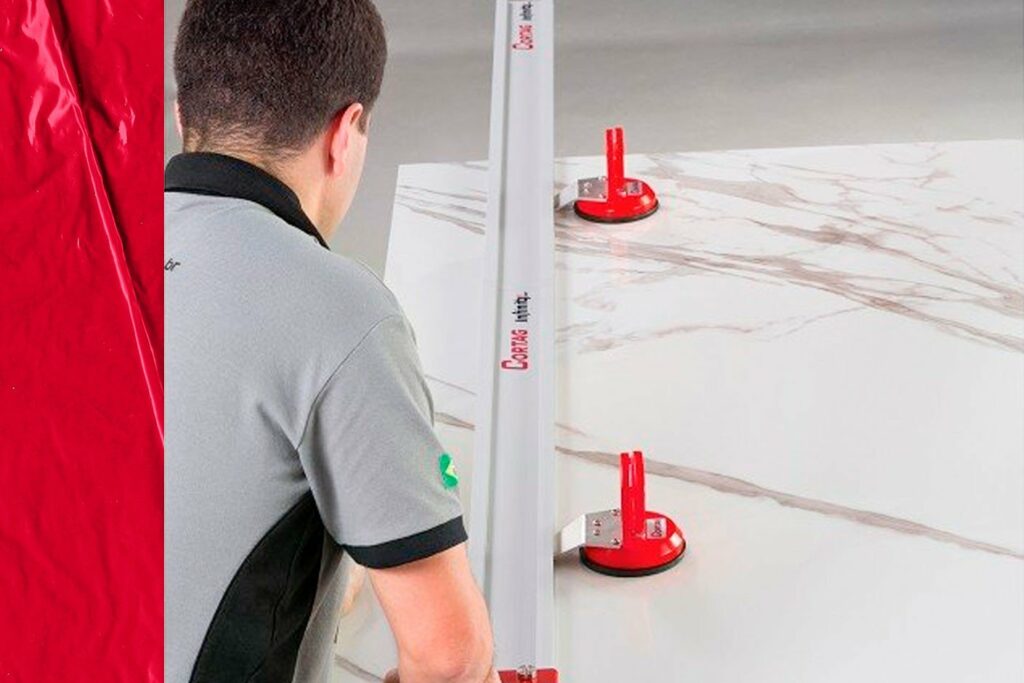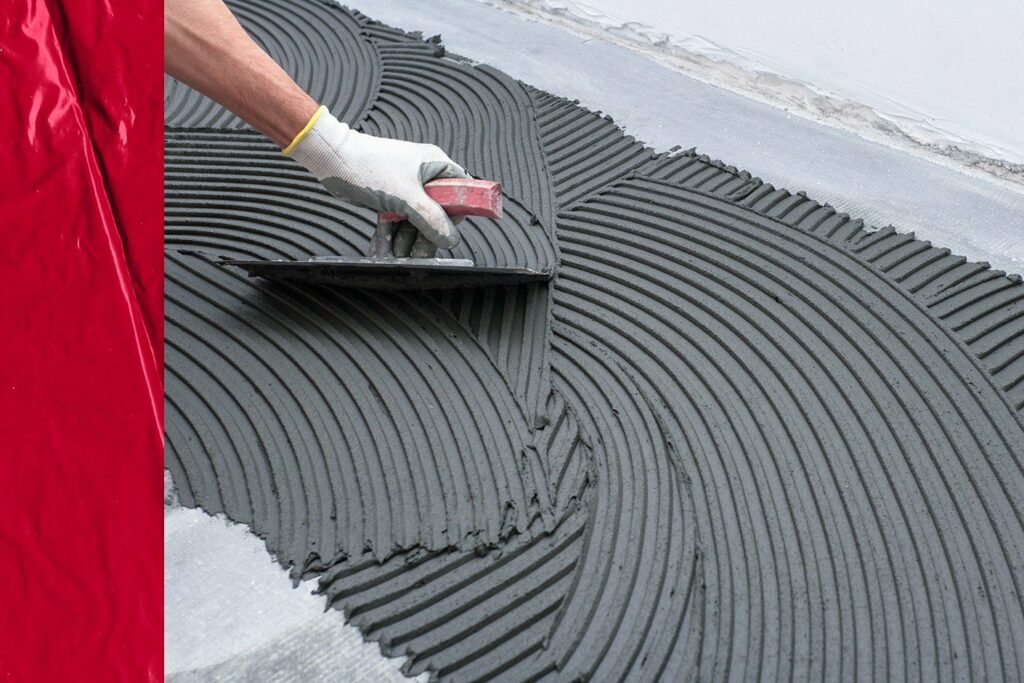Flooring installation is the main activity of a tile installer. However, after years of experience and repetition of the task, it is possible that some steps have been forgotten or overlooked.
Therefore, we have compiled a list of the main practices that should not be disregarded during this phase. Keep reading to also check tips that further contribute to the accuracy of the task.
Happy reading!
The Impacts of Lack of Quality in Flooring Installation
The quality of any task in the construction industry is crucial for the success of the entire project, whether it’s just a renovation or the construction of a new development. In the case of flooring installation, it is no different.
This activity is related to the finishing touches, which are highly noticeable to the client. When hiring your services, expectations are created. If these expectations are not met, it can lead to negative experiences and even damage your market reputation.
Moreover, the lack of quality in flooring installation can cause accidents during the process and after the delivery of the project, directly affecting the users’ safety.
Safety is essential for the well-being and comfort of your clients, as well as for your own physical integrity. Therefore, quality is also related to the protection and preservation of health.
According to the most recent data from the National Association of Occupational Medicine (ANAMT), there are, on average, 549,405 workplace accidents in the country. In the construction industry, there were 30,025, which represents 5.46% of all cases.
Desplacamento is the Biggest Cause of Customer Dissatisfaction
Lack of quality during floor installation is often manifested by the displacement of the coating. It is a very common issue in the industry and the main cause of customer dissatisfaction.
However, this is not an insurmountable problem. Ideally, it should be avoided to eliminate any disruptions, losses, and costs in the project.
According to the latest data from SindusCon-SP, 20.7% of construction companies face problems with ceramic displacement in their projects. In 81.4% of cases, it occurs within the first two years after the coating application.
These data can easily be applied to the reality of a tile setter. Unfortunately, this issue tends to be common due to various factors, as we will see below. Therefore, these are valuable tips to avoid customer dissatisfaction.
What Not to Do During Floor Installation?
As mentioned, the lack of quality leading to displacement during floor installation is unfortunately a common problem in the industry. There are several factors responsible for hindering the success of activities.
The main issues are related to execution errors, such as poor preparation of mortar and joints, causing the tiles to come loose.
However, there is also a lack of attention to material specifications, flaws in the project, the presence of moisture, and improper subfloor preparation. Additionally, using incorrect and outdated techniques and tools contributes to the problem.
In summary, inadequate, inexperienced execution without the support of the right equipment is mainly responsible for tile detachment.
Therefore, we have compiled all the factors that contribute to the appearance of these problems during this stage and, therefore, should be avoided. Check it out!
1. Not Evaluating the Subfloor
The first major mistake during floor installation is related to the lack of evaluation of the subfloor. It is extremely important to pay attention to this detail to ensure the correct adhesion of the tiles, avoiding displacement.
Evaluate the subfloor preparation. Ideally, it should not be completely smooth but have a rough surface. It is also essential to assess the existence of irregularities in these areas, such as holes or puddles.
According to NBR13753, “the installation of ceramic tiles must occur after a minimum curing period of the base or subfloor. In the case of not employing any curing process, the installation must occur at least 28 days after the base concreting or 14 days after the subfloor execution.”
2. Not Studying the Installation Location
Floor installation is a process that begins even before the actual placement, making attention to detail essential for the perfect flow of the activity.
Therefore, an evaluation of the installation location beyond the subfloor is necessary. Verify if the location is clean and free of objects that may cause poor quality, such as dust and stones. This helps prevent material loss, cost increases, and rework.
Don’t forget to assess the squareness of the environment. The ideal angle between walls and floors, after plastering, should be 90º. In parallel, analyze the slope for proper water drainage without hindering door movement, for example.
Finally, pay attention to the layout of the pieces during floor installation. It will be responsible for predicting the need for cuts and, consequently, where the installation will start.
A good tip is to consider starting the installation from the back of the room towards the door. This avoids stepping on the tiles that have just been laid when leaving and entering the space.
Then, build a master line of pieces to facilitate the sequence and assist in the installation of the others.
3. Not Properly Preparing the Mortar
Incorrect mortar preparation is one of the main villains in floor installation, responsible for ensuring the perfect adhesion of the tiles to the surfaces.
Therefore, it is important to follow the manufacturer’s instructions and recommendations for preparation and use. There will always be specifications regarding the ideal amount of water and the usage time interval, for example.
It is worth noting that the open time of the mortar is a factor that should be considered with great attention. For perfect adhesion, it is ideal to prepare small quantities to allow simultaneous application of the coating and avoid exceeding the indicated time.
Otherwise, it will harden, and it will not be possible to add more water to make it malleable again. This not only harms the efficiency of the activity but also causes material loss and cost increases.
During this phase, it is possible to use a mortar mixer to make the material more homogeneous and resistant. This tool ensures productivity and quality by speeding up the process with its excellence.
Due to its dynamism, it can mix liquid and fibrous materials, promoting uniformity, cost reduction, and waste elimination.
4. Not Paying Attention to Tile Alignment
Not caring about tile alignment is the same as completing this process halfway. Installing a floor without proper leveling is the perfect formula for causing accidents, tile breakage, and displacement.
Therefore, use the correct accessories and ensure leveling between the tiles. This activity is important for the aesthetics of the environment, as well as for the performance of the final process.
When the tile is near its final position, alignment must be performed using a system composed of spacers, wedges, and application pliers.
5. Not Using Updated Tools
Finally, what you should not do during floor installation is not using outdated or compromised tools.
The use of inappropriate tools, accessories, and equipment directly affects quality and causes constant failures and rework.
Using the right instruments is important for the functionality of floor installation and also to ensure their good condition.
The use of innovative, modern, and intact tools promotes operational safety, economy, productivity, and accuracy.

